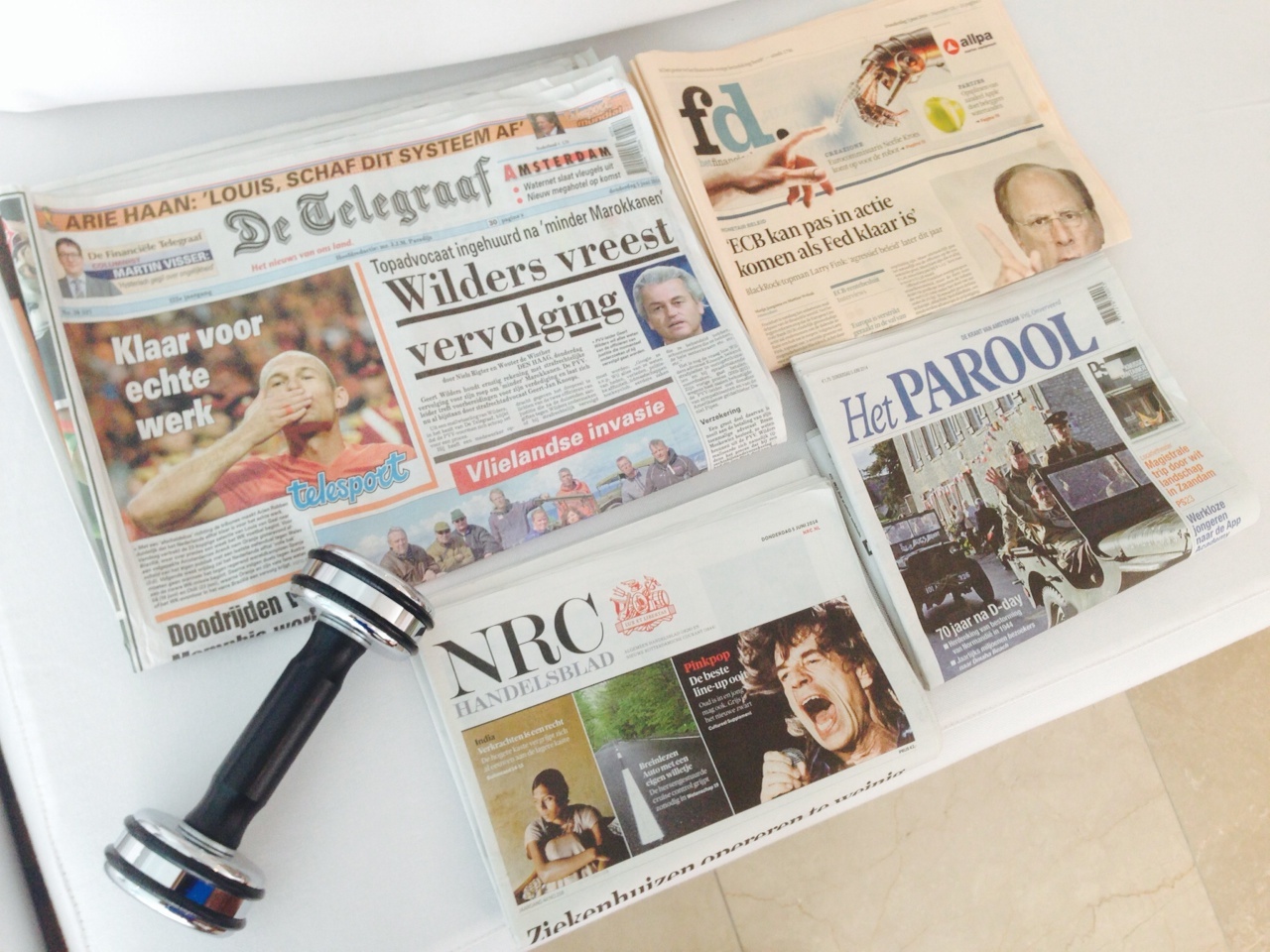
Four of Amsterdam’s daily newspapers: De Telegraaf, fd, NRC and Het Parool
There I was, working out in the gym of The Amstel Hotel in Amsterdam, when, suddenly I saw four of the major Amsterdam daily newspapers lying side by side at the entrance of the gym: De Telegraaf, fd, NRC and Het Parool.
They looked inviting, as if saying “take a break from the sweating and lean back to read one of us, or all of us.”
The image I got in my head was a different one. Perhaps it is because I just did a presentation for a large group of Dutch editors, publishers and other media types for the MediaFacts Congress titled The Future of Publishing.
Because this was in Amsterdam, I knew it right away that there would be questions about our Garcia Media work with the nation's largest circulation daily, De Telegraaf, which is making a format conversion from broadsheet to compact . We are also guiding the De Telegraaf team through the digital platforms as well.
It will be good. It will be different. It will be change.
That is the story. That is the truth and that is the best I can say at the moment.
When journalists interview journalists
Journalists interviewing journalists is seldom a good idea.
So, at least a couple of times, during the after-speech handshaking at the MediaFacts Congress, I answered questions from the aggressive questioning from reporters who already had an agenda in their head of what they would like me to tell them.
Isn't that usually the case? Reporters have “conceived” the way they think their story should go. When it does not go that way, they try to squeeze their source a little bit, with insinuations of what they would like the source to cough up.
And, so, for the record:
De Telegraaf team is NOT like any other team I have ever worked with. That they think three times before they decide to make a major change? True, but so have hundreds of the other newspapers with which I have consulted over the last four decades. De Telegraaf is not more nor less tied to its past. Just a little.
De Telegraaf is unusual in its design, but so are many other newspapers worldwide. . As you can see when it sits next to its competitors, De Telegraaf displays a design from another era, complete with dog legs, boxes in a variety of borders, colors that clash. But that is its DNA. IT is what makes it what it is. I will not deny that revamping De Telegraaf is the ultimate newspaper design workout. But it is a good workout.
De Telegraaf is NOT saying NO to our suggestions for details and changes that will add value to their offering. Quite the contrary, there is a spirit of cooperation, from the editor, Sjuul Paradis, down. It is a joy to work with this team.
De Telegraaf WILL implement the changes, although I cannot give anyone a specific date, because I simply do not have one. But the changes will happen. And, who knows? Perhaps the things De Telegraaf will do with digital, and particularly with smartphones, may be the most revolutionary of any Dutch newspaper to date.
Perhaps this is not the story those hungry journalists want to hear.
This, however, IS the story.
Stay tuned for De Telegraaf's changes.
For those reporters whom I have left a bit frustrated: Contact me for the full interview when De Telegraaf introduces its new compact edition and other pertinent changes.
For now, let that story develop on its own. It will be a good story, with a happy ending. I promise.